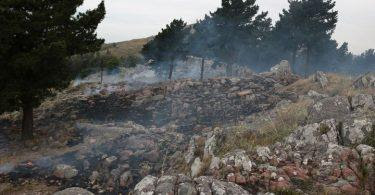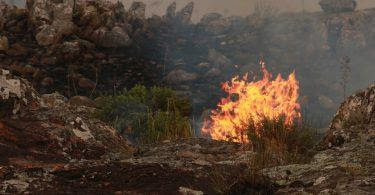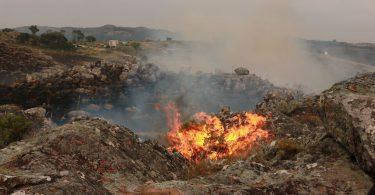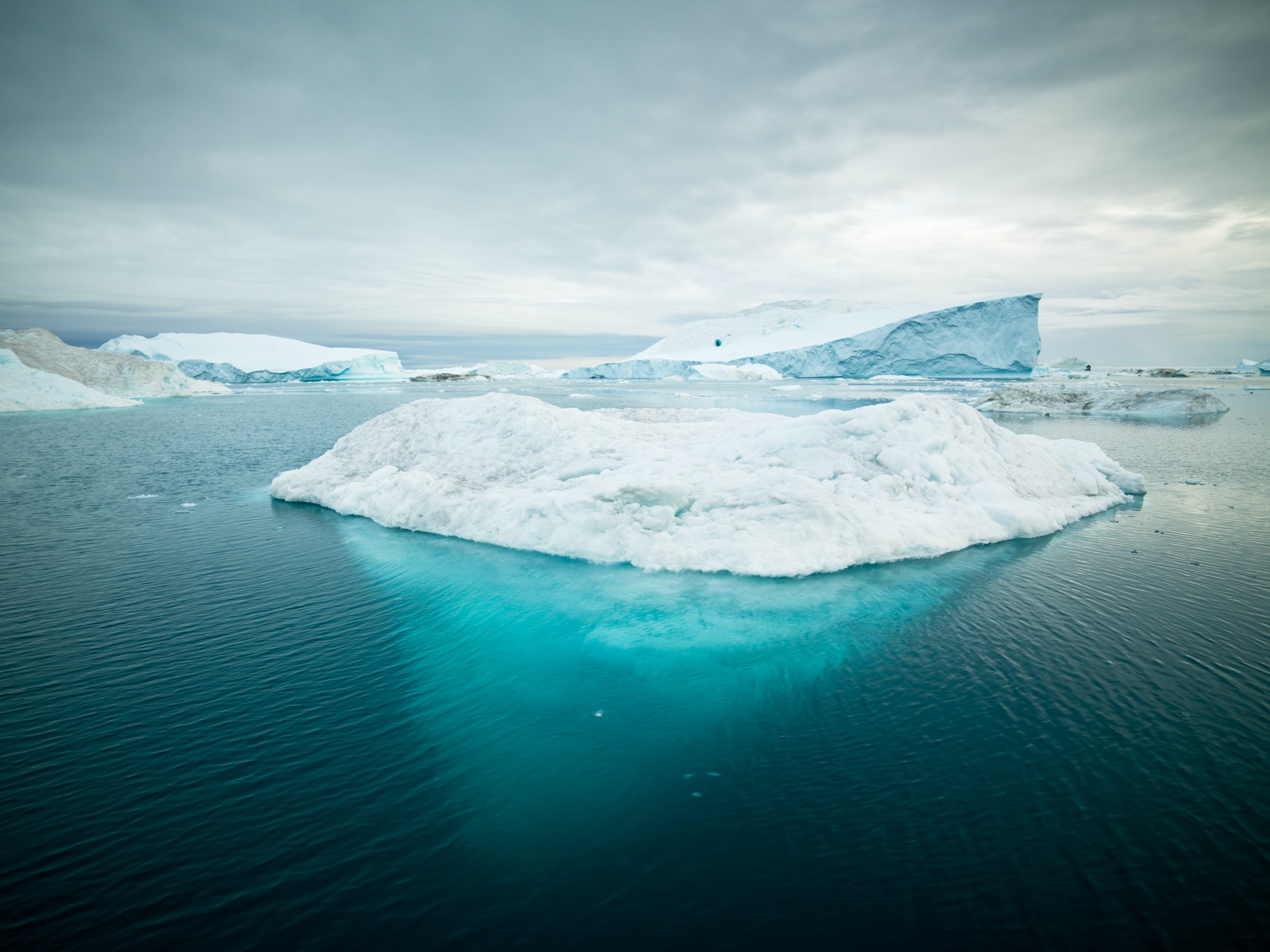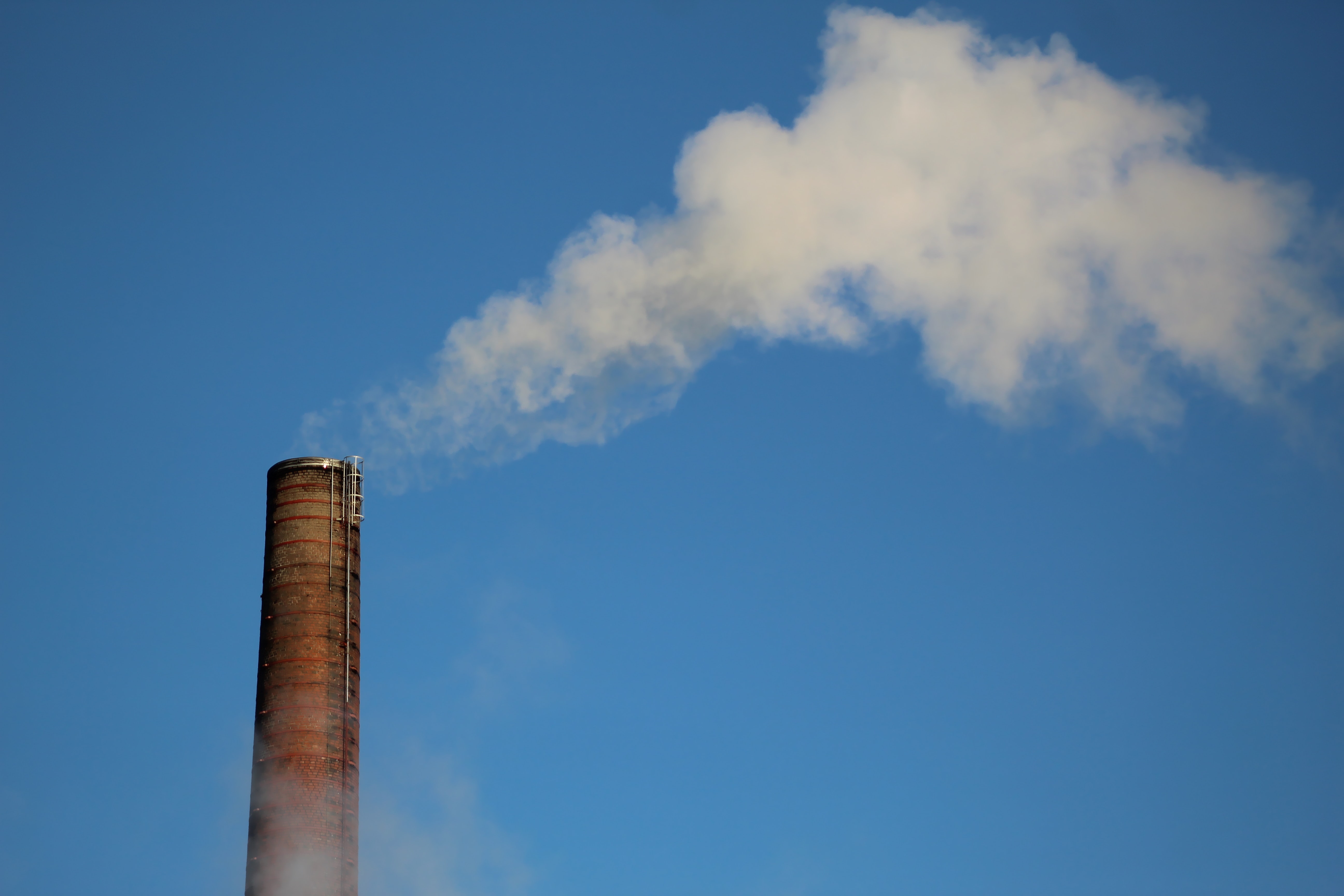Tras una extensa jornada de lucha intentando sofocar el voraz incendio que se desató el pasado jueves al mediodía entre la sierra de Las Ánimas y la zona de La Cascada, abarcando la zona del Golf y el Hotel Amaike, los Bomberos recibieron el apoyo de un helicóptero y un avión hidrante que colaboraron para extinguir las llamas.
La amplia superficie incinerada demandó que todas las dotaciones locales se avocaran a la tarea de apagar el foco ígneo y que debiera arribar también personal de María Ignacia, Rauch, Villa Gesell, Pinamar y Mar del Plata.
Las aeronaves comenzaron a operar a las 9 de este viernes, pese a que el avión había arribado con antelación para prepararse. El helicóptero, por su parte, como venía en viaje debió esperar a que se enfriara el motor para poder empezar a trabajar.
Ambas dotaciones pertenecen al Servicio Nacional de Manejo del Fuego, hasta 2012 denominado Plan Nacional de Manejo del Fuego, que es el organismo nacional argentino encargado de luchar contra los incendios declarados en áreas naturales o rurales.
“El avión se maneja de acuerdo a las necesidades; hay un jefe de disparo que se encarga de ver lo que hace falta con la información que les llega también del personal que está trabajando en el área”, informó en comunicación con el programa radial Cosas que Pasan (Tandil FM 104.1) el director de Defensa Civil, Ruben Marchiori, y agregó que el helicóptero se aprovisionó de agua en el Lago del Fuerte “porque es el espejo de agua más grande que tenemos y que más cerca queda”.
Por tal motivo, se les solicitó a los ciudadanos que no se aproximaran a la zona del dique para practicar deportes náuticos hasta tanto las llamas no se apagaran para que no entorpecieran el accionar de los medios aéreos que estaban trabajando.
Tras más de 24 horas, solo quedaron algunas llamas en la parte posterior del cerro del hotel Amaike, por el lado de la Ruta 74, que fue el poco que atacaron el helicóptero y el avión, el cual tenía su base operativa en el Aeroclub y la Dirección de Vialidad le proveía agua con dos camiones cisterna.
El factor humano, lo que faltó
Las fuertes ráfagas de viento hicieron que las llamas se propagaran a gran velocidad y que el área acechada por el ígneo fuera realmente extensa, por lo que no alcanzaba solo con las dotaciones locales para frenar el avance.
Al respecto, Marchiori destacó que fue de vital importancia el arribo de los apoyos de localidades vecinas ya que los efectivos locales habían estado todo el día operando y el cansancio ya comenzaba a sentirse.
“Y la verdad es que lo que más hace falta es el factor humano. En cuanto a lo que es material, equipamiento y demás, estamos bastante completos. Pero el factor humano es lo que siempre se acaba primero por el tema del cansancio”, refirió.
Añadió que los bomberos estuvieron trabajando desde el jueves a la mañana y que se quedaron para combatir el incendio toda la madrugada. “Entonces vino bien que llegaran refuerzos”, completó.
Ningún herido
Resaltó el director de Defensa Civil que afortunadamente ninguna vivienda fue afectada y que eso fue lo primero que se propuso el jefe de Bomberos de Tandil, Ramón García: “Su primer punto fue ese, preservar las casas. La vegetación, lamentablemente, se tiene que quemar”.
Contó que, inclusive, las zonas que se quemaron eran de muy difícil acceso lo cual dificultó el combate de manera manual o con autobomba. Por ello, debieron esperar a que llegar a algunas zonas donde se lo pudiera atacar.
“Lo que es vegetación se ha quemado bastante, pero es solamente vegetación. No hubo que lamentar pérdidas materiales ni nada por suerte”, sostuvo.
Manifestó que estuvo muy bien coordinado el trabajo y que las diferentes dependencias lograron coordinarse de buena manera para ofrecer una rápida actuación.
“Si bien las imágenes que circularon son muy espectaculares, se ve que había mucha cáscara seca, y eso cuando enciende es un fogón. Pero una vez que se quemó toda esa vegetación, el incendio disminuyó muchísimo. Quedaron algunos focos pequeños que se fueron extinguiendo”, concluyó.
La reposición de los postes
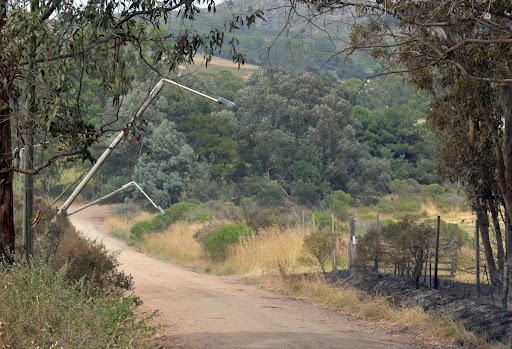
Trabajadores de diferentes prestadoras de servicios se hicieron presentes en el camino lateral de El Valle de Tandil que conduce al hotel Amaike para reponer los postes que habían sufrido la feroz embestida del fuego, que avanzó a gran velocidad.
El hecho de que la gran mayoría de los parantes fueran de madera hizo que muchos de ellos se consumieran y se cayeran, mientras que otros lograron quedar parados pero con ciertos daños.
Desde la Usina y otras empresas de comunicación se apersonaron en el lugar para intentar reactivar el servicio y para poder volver a poner de pie algunos postes, ya que otros eran prácticamente irrecuperables.
“Fue bastante agotador”
El propietario de El Valle de Tandil Country Club, Golf & Resort, Nicola Parasuco, dialogó con el programa Tandil Despierta, que se emite por Eco TV y Tandil FM 104.1, y reconoció que fue muy agotador todo lo vivido en las inmediaciones del campo de juego ya que, incluso, un lote del lugar también se incendió.
“Creo que ya a las 10 se veía humo en La Cascada y pensamos que lo iban a apagar, como siempre. Pero en un momento dado, con todo el viento norte, fue terrible”, comenzó relatando.
Marcó que las llamas avanzaron a gran velocidad y que rodearon el perímetro del hotel, por lo que debieron quedarse hasta altas horas de la madrugada colaborando con los Bomberos.
“Quiero agradecer a todos los bomberos y a todo el personal que operaron siempre con ambulancia por si alguien tenía algún problema. Y los bomberos trabajaron como leones”, agradeció.
Luego de que se incendiaran los campos aledaños al hotel Amaike, un terreno del Country comenzó a arder en llamas pero afortunadamente lograron extinguir el ígneo a la brevedad.
Parasuco evaluó que pudo haber sido el propio viento el que movió alguna chispa o un pájaro el que hizo que el incendio se expandiera: “No hay otra. Porque no eran menos de 800 metros lo que separaban ambos terrenos. A mí me da la impresión de que fue un animal, acá no hay una persona que vaya a prender un lote. No lo quiero pensar. Aparte estuvimos revisando las cámaras y no se ve absolutamente nada. De todas formas, el autobomba lo apagó en diez minutos por suerte”.
No obstante, recordó que alguna vez hubo un incendio peor. Tiempo atrás, un vecino no pudo controlar las llamas y el foco ígneo se expandió por toda la cancha y llegó hasta el monte donde hoy se encuentra el hotel, que en aquel entonces no estaba. Según narró el propio titular del lugar, había 25 mil pinos y no quedó ninguno.
“La verdad es que fue terrible. Desgraciadamente los que peor la pasaron fueron los del hotel, porque estaban rodeados. Pero gracias a Dios no pasó a mayores, porque el edificio está intacto, no lo tocó”, concluyó.

“Fue lamentable, una pena”
Ariel de Mayolas, gerente de División de Hotelería y Gastronomía de Faro Verde, grupo que es dueño del Hotel Mulen y de la Hostería de La Cascada, destacó que si bien las pérdidas de vegetación fueron notables, los empleados trabajaron arduamente y afortunadamente ningún huésped sufrió consecuencias.
“Lamentablemente se nos quemaron dos montes de eucaliptos de 25 años que estaban creciendo. Pero por suerte la gente no sufrió ningún percance, todos nuestros huéspedes los pudimos trasladar a Mulen”, indicó.
Informó que el fuego se originó por la mañana en las sierras, del otro lado de La Cascada, pero lamentablemente el viento lo esparció. Los empleados de ambos establecimientos hoteleros formaron tres cuadrillas y comenzaron a tratar de frenar el voraz avance de las llamas, ya que en un principio los Bomberos estaban trabajando en otra zona, “pero el viento era muy fuerte y no se podía frenar”.
Expuso que el fuego entró al predio pero que no llegó a las instalaciones sino que se quedó en el amplio campo que los rodea, que está arado con animales.
“La imagen fue lamentable, una pena. No puedo decir más. Pero por suerte se va a regenerar, como todo en la naturaleza”, se sinceró.
Contó que está todo muy secó y que fue por eso que el fuego creció y se expandió tan rápido: “Hace muchos días que no llueve. El arroyo de La Cascada, que es el que usualmente da humedad a la zona, estaba totalmente seco. Y por eso las llamas lo cruzaron”.
Reveló que, por las charlas que mantuvo con los bomberos, el incendio se habría originado intencionalmente.

“Pasamos una tarde y una noche muy dura”
Desde el hotel Amaike, uno de los más afectados por el foco ígneo ya que fue rodeado por las llamas pese a que las instalaciones no sufrieron mayores contratiempos, destacaron que atravesaron por una jornada muy compleja.
“Pasamos una tarde y una noche muy dura. Fue algo inesperado por la forma en que se presentó, pero gracias a los bomberos y a todo el personal del hotel pudimos salvar la propiedad”, destacó Amalia Masoni, titular del establecimiento.
Tal como se pudo observar en diferentes videos y fotografías, recordó que el inmueble quedó en el medio de las llamas pero afortunadamente no sufrió mayores daños.
“La pérdida más grande es el caño de PVC que se quemó, que es el que trae el agua desde El Valle. También se perdió la antena, porque el fuego pasó por arriba del bosque, donde están las instalaciones. Es decir que la parte externa del hotel sufrió los daños más importantes pero la propiedad quedó intacta, excepto algunos detalles”, informó.
Finalmente, agradeció también a todos los que se preocuparon y destacó que si bien fue un momento muy duro, en todo momento se sintió acompañada.

El agradecimiento de Lunghi
El través de sus redes sociales, el intendente Miguel Lunghi agradeció a todas las personas que colaboraron en la tarea de sofocar el foco ígneo que se había originado en un sector serrano y que demandó el arribo de dotaciones externas a la ciudad, como así también dos aeronaves hidrantes: un helicóptero y un avión.
Las fuertes ráfagas de viento registradas durante la jornada del jueves hicieron que las llamas avanzaran a gran velocidad y se esparcieran por una amplia zona, que abarcó desde el sector de la sierra de Las Ánimas hasta la zona de La Cascada.
Tras el accionar de los uniformados que se hicieron presentes para combatir las llamas, Lunghi publicó un descargo en su perfil de Facebook para agradecerles.
“Gracias. A los hombres y mujeres que ponen el cuerpo para cuidarnos, especialmente a los bomberos y el personal de salud. En reconocimiento a su trabajo actuemos con responsabilidad. La mayoría de los incendios forestales pueden evitarse. Cuidar el patrimonio natural, nuestros bienes y nuestras vidas es tarea de todos“, sostuvo.
Este artículo fue compartido como parte del World News Day 2021, una campaña global que destaca el papel fundamental del periodismo basado en hechos a la hora de proveer noticias e información fiables al servicio de la humanidad. #JournalismMatters







